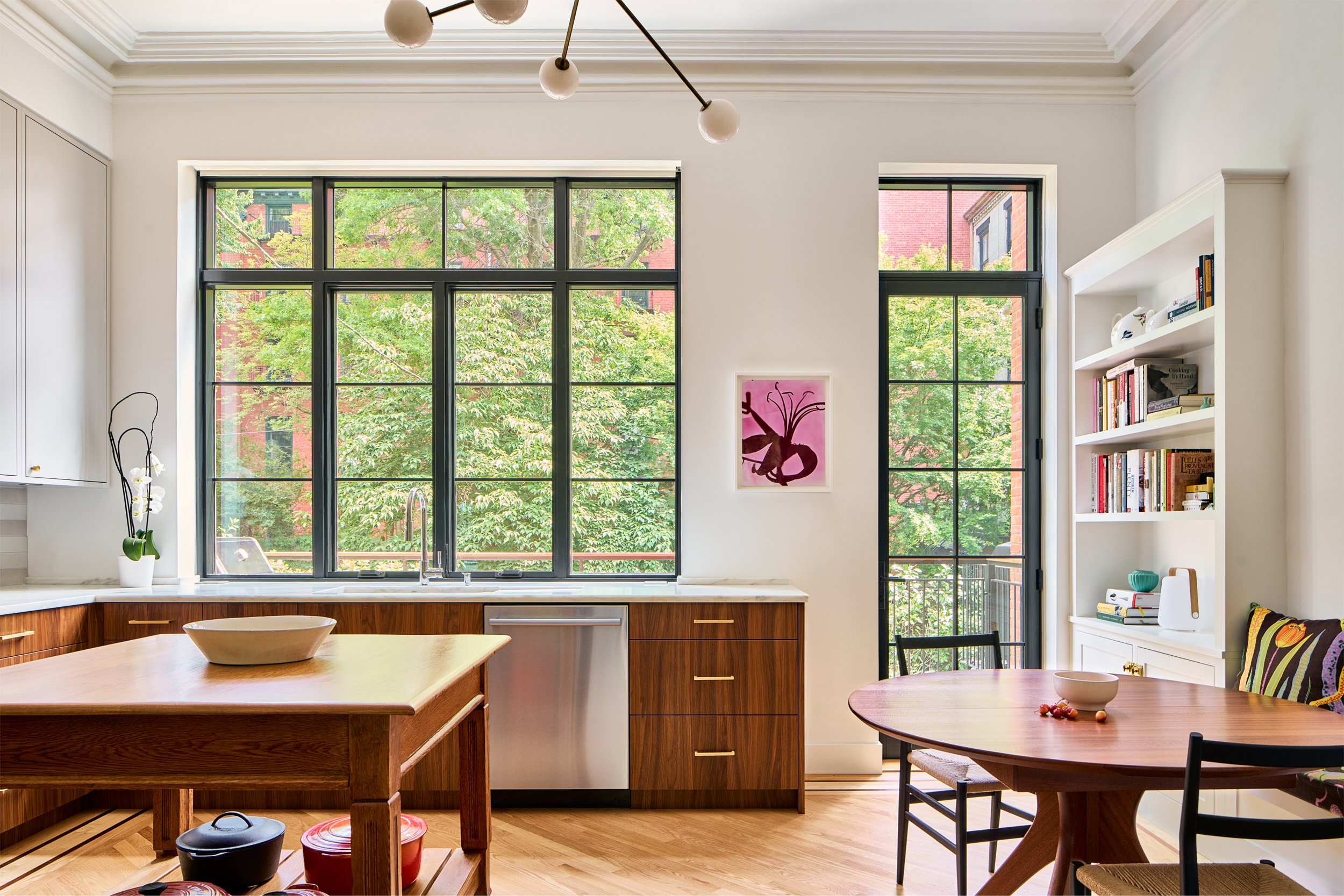Close Up on Cornices
When you are standing on the elevated platform on the Brooklyn-bound side of the Marcy Avenue stop, you are at about eye-level with the top floor of the four-story buildings that line Broadway. This provides an unusually close view of the cornices, some of which are quite interesting. This one in particular caught our eye…
When you are standing on the elevated platform on the Brooklyn-bound side of the Marcy Avenue stop, you are at about eye-level with the top floor of the four-story buildings that line Broadway. This provides an unusually close view of the cornices, some of which are quite interesting. This one in particular caught our eye because the fact that it is made of wood is so glaringly obvious. This got us thinking about what cornices were made out of over the years. We’re hoping there are some architectural history buffs out there who know something about what cornices were constructed of over different periods. This is of particular interest to us because our house is missing its cornice, so at some point in the near future we’ll want to get a replacement made.





The options for cornice include GFRC (glass fiber reinforced concrete) and FRP (fiberglass)
http://www.strombergarchitectural.com/products/cornice
I’m part of a unique manufacturing company. We produce fiberglass cornice products as well as theme items, but it’s all custom. We have either duplicated or custom build cornice on a few jobs in manhattan. 381 Park Ave. 170 5th Ave. 140 river side drive. the Fisk building, 30 central park south etc. When your ready I would like to bid on your cornice.
I own a brownstone that was poorly renovated. Cornices and other details have been replaced with aluminum siding. I checked out fiberglass cornices and the material cost is upwards of $2,500. I’m checking out Fiber Reinforced Polyurethane/Plastic, but I think it detetiorates faster. Anybody know about FRP?
If you are thinking about fiberglass, be sure to get the addresses of NYC properties that each company you’re considering has done, and check them out in different lighting conditions. Some are very clearly plasticy– others, its very hard to tell. It depends on the quality/ technique used for the outer layer (which also, incidentally, contains the bulk of the UV protection.)
It is a price issue. If fiberglass is cheper more durable and when it looks the same I would prefer it over the old school stuff.
Cornicle is hang so hight nobody can tell what is made of.
Banisters and stuff you can touch is a quite different thing i would never go to fiberglass.
there’s a metal cornice at “old moon chattel” (?) in williamsburg laying on the floor in the salvage place, i didn’t check the price though. looked to be about 20′ wide and seemed like they had restored it.
I’ve renovated 19th century buildings that featured (original) stone, wood, or metal cornices. Last year we did a huge renovation and facade restoration where we uncovered the remains of the original 1852 wood under a later (circa 1880’s) metal cornice. After much deliberation, we took the cornice (and facade) back to wood and 1852. Talented craftspersons can mitigate concerns regarding traditional materials’ durability- much of the cornice work on view today in cities is 100 plus years old. The fiberglass option, while plausible, is a nonstarter for me. Good luck either way and thanks for caring about ‘the old stuff’.
Generally, cornices were wood through about the 1870s, when the shift towards pressed metal began. Storefront cornices were usually wood or cast iron (not sheet metal).
Fiberglass and PVC are used as replacement materials now. You can tell the difference if you pay a little attention. Older fiberglass cornices suffer from UV degradation (apparently less of a problem now). A clear give away is the large caulk joints you almost always see in fiberglass cornices.
Browstoner – look at your neighbors to see what your cornice was. If your building was not part of a development, look around for buildings done by the same architect at the same time.
I attended that “Anatomy of a brownstone” class. One of the architects advocated using a fiberglass cornice if you are missing yours. Apparently they run about $3000 and never need paint and you can’t tell it’s fiberglass.